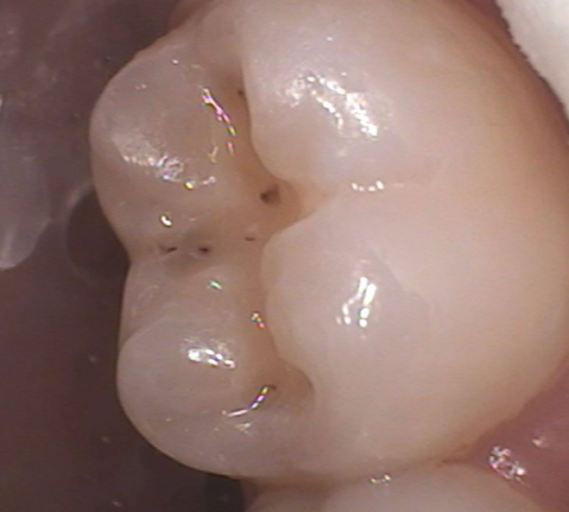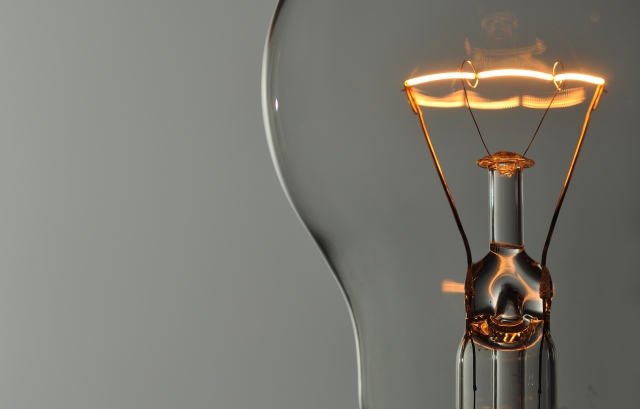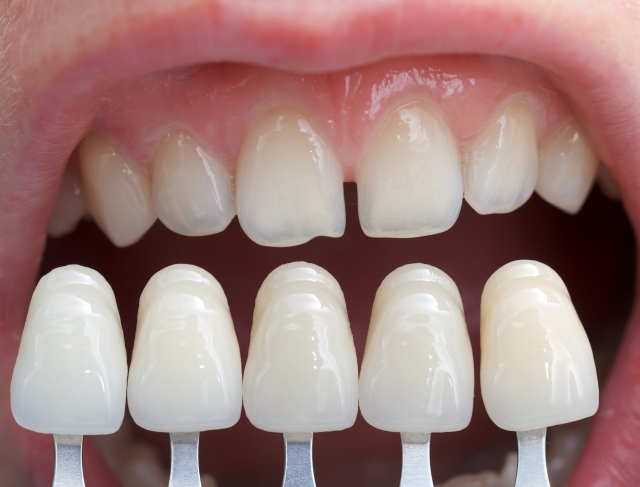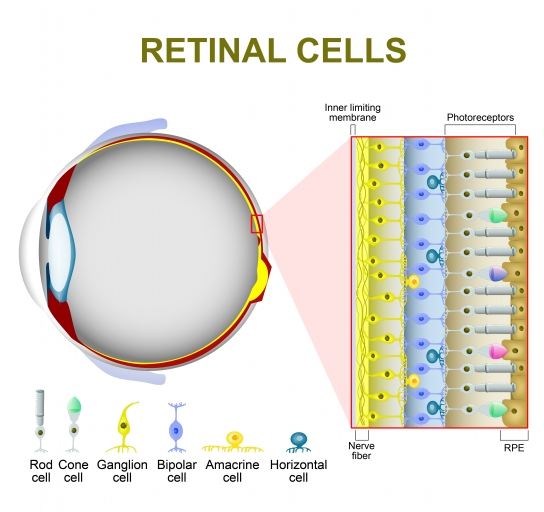Color Science: Shade Guides and Shade Selection
Color is experienced through our eyes and interpreted by our brain. An understanding of our physiology is basic to the application of the principles of color science and shade selection in your dental practice.
In dental school, you learned how the eye perceives light differently through our cones and rods. These two parts of the eye act independently from each other – the cones act as color receptors and the rods act as light receptors – and each of these vary in their reactivity over time. This variance can cause issues in selecting the correct color for your patient. In order to achieve the most successful shade selection, it is helpful to remember that there are variables in color recognition and that there are tools available to increase your efficiency and accuracy.
Taking note of these tools and variables in color recognition will aid you in selecting the correct shades for your patient and ensure that they will leave your office with an ideal smile.
Shade guides

Most dentists receive or purchase their shade guides in dental school and continue to use them throughout their careers. How old is your shade guide? In today’s day and age of infection control it has become necessary to disinfect and or sterilize our shade guides after each use. There are glazes and stains that are applied to all shade guides. These will be removed over time with repeated wiping or soaking in liquid disinfectant/sterilant liquids. When this occurs, the visual appearance of the tabs will change. The result? Your A-2 tab does not match your lab’s A-2 tab.
If you have shade guides that are several years old, and you have been wiping or soaking them with liquid disinfectant/sterilant liquids, it would be wise to consider purchasing new shade guides. Even one remake due to shade because of an older shade guide would cost you (in chair time) more than the cost of replacing several shade guides.
Another reason to consider replacing your old shade guides is that many newer shade guides can be autoclaved. Autoclaving your shade tabs will not cause these stains and glazes to be removed over time. In fact, all currently sold shade guides by both VITA and Ivoclar-Vivadent are now fully autoclavable.
If you have questions about whether your guide can be autoclaved because it is a few years old, I would recommend contacting the manufacturer.
The cost of shade discrepancies
As is the case with old shade guides, there are financial implications to errors in shade taking. Have you ever thought about what the cost is when we fail in our shade-taking efforts?
What would happen with a 5 percent problem in taking shades for your patients? In other words, five out of every 100 restorations would need to be remade due to shade inaccuracies. Several studies have documented shade as the No. 1 or No. 2 reason for remakes of laboratory-fabricated restorations.
Let’s make some assumptions:
- The average value of chair time in the United States has been reported to be $600 per hour.
- If we assume you practice 32 hours per week, your total production would be $19,200 per week.
- If 50 percent of your total production was preparing shade-dependent restorations, you would therefore produce $9,600 per week in shade dependent restorations.
- If 5 percent of this weekly production is lost, we waste $480 per week, $1,920 per month and $23,040 per year just due to inaccuracies in shade-taking.
So the financial cost can be steep when proper techniques are not followed. Before we can even talk about technique we need to go back to the basics. What is actually necessary to see color?
Understanding variables in shade taking and selection
There are four pieces to this puzzle:
- The light
- The object interacting with the light
- The receiver (your eye)
- The processor (your brain)
If we alter one of the four pieces to the puzzle above, we will alter our perception of a given color, or as we say in dentistry, the shade. Lighting quality, object composition/surface and understanding simple physiology about the eye and how we process information can lead to success or failure.
A similar analogy applies to infection control. Remember in dental school when we were taught about the links in the chain of infection? We were taught if you break one of the links in the chain of infection you would not transmit disease. Alterations to any one of the four pieces of the color puzzle can lead to failure.
The light variable

Let’s take a look at the first piece of the puzzle: The light.
There are two aspects to this variable that we need to keep in mind: light quality and light quantity.
Light quality relates to the degrees Kelvin (K) or color temperature. You want to look for light sources that are closest to 5,500 K, which is ideal for dental shade matching. Illuminants with the nomenclature of D50 fulfill this requirement. So-called “daylight” bulbs are available, which can have a range up to 6,500 K. Color-corrected lighting is available from dental-product distributors and home-improvement stores. Any source for the bulbs is acceptable as long as it has the D50 designation.
Light quantity relates to the intensity of light, and can be measured by a light meter. The range of acceptability that you should strive for in the operatory is 150 to 200 foot-candles. The amount of light can be of concern in one of two situations:
- The patient chair is situated directly in front of a window
- An operatory that has no natural daylight source
Having the correct quantity and quality of light is a great starting point for accuracy in shade selection.
The object variable

The second piece of the puzzle is the object.
Teeth interact differently with light than many other objects in nature. Teeth fluoresce. This means that they will emit visible light when exposed to ultraviolet light. To make it simpler, the light shining on the tooth versus the reflected light is a different wavelength.
Why is this important? Because light is changed by the tooth.
Let’s take an example of another optical property that is influenced by the tooth: Gloss. A porcelain crown in its bisque bake stage versus glazed and polished looks different. Is it different? The answer is no. We changed the tooth’s gloss or the smoothness of the surface.
These are two examples of how the object can influence our perception of the shade. What is the take-home message? If the object changes light and if different objects reflect light differently, then the restorative material you choose (and its underlying substructure when required) matters.
Depending on the clinical situation (reduction of the prepared tooth, position in the arch underlying tooth color, etc.) your laboratory may recommend one type of restorative material over another.
Picking the final desired shade is an important step, but understanding that other factors influence our perception of color is also critical to the decision-making process of shade and material selection.
The biological variables
The third and fourth pieces of the puzzle are the receiver (your eye) and the processor (your brain).
Ever wonder why there are times when you selected a shade for your patient and, when the restoration came back from the lab, it just didn’t match? You look at the shade you wrote on the prescription and it matches your shade tab, but it does not match the patient?
There can be physiological reasons for this. We have two types of receptors in our eyes: cones and rods. Cones perceive color and rods perceive lightness and darkness.

If you look at the activity of cones and rods at the instant of stimulation when viewing an object, the cone response diminishes within fractions of a second whereas the rod response persists.
So when we look at a tooth to select the shade, it is important to trust your first instinct, because within a second after first viewing an object, we are more sensitized to lightness and darkness versus color. If the shade of a restoration is off, it will be off due to lightness or darkness, not the color.
We have approximately 20 times the number of rods than cones in our eyes. When we were in dental school, many of us were told the following: Trust your first instinct, don’t stare, and if the shade is off it will not be the color. Now you can see that there is a physiological basis for what we were all taught.
Final thought
There are many factors to color science and shade selection in dentistry. Most of the time we match shades quite well. A greater understanding of the underlying science can help increase our accuracy and predictability – as well as decrease remakes – in order to directly and positively affect our practices.
Martin Mendelson, D.D.S., C.P.C., E.L.I.-M.P., is a member of Spear Resident Faculty.
SPEAR NAVIGATOR
Transform how your practice runs by engaging the team through
coaching and training
A guided path to excellence through structured coaching and self-guided resources that will align your team, streamline processes and drive growth. Transform your practice by implementing Spear’s proven playbooks for developing and retaining a high-performing dental team.

By: Martin Mendelson
Date: October 26, 2016
Featured Digest articles
Insights and advice from Spear Faculty and industry experts


